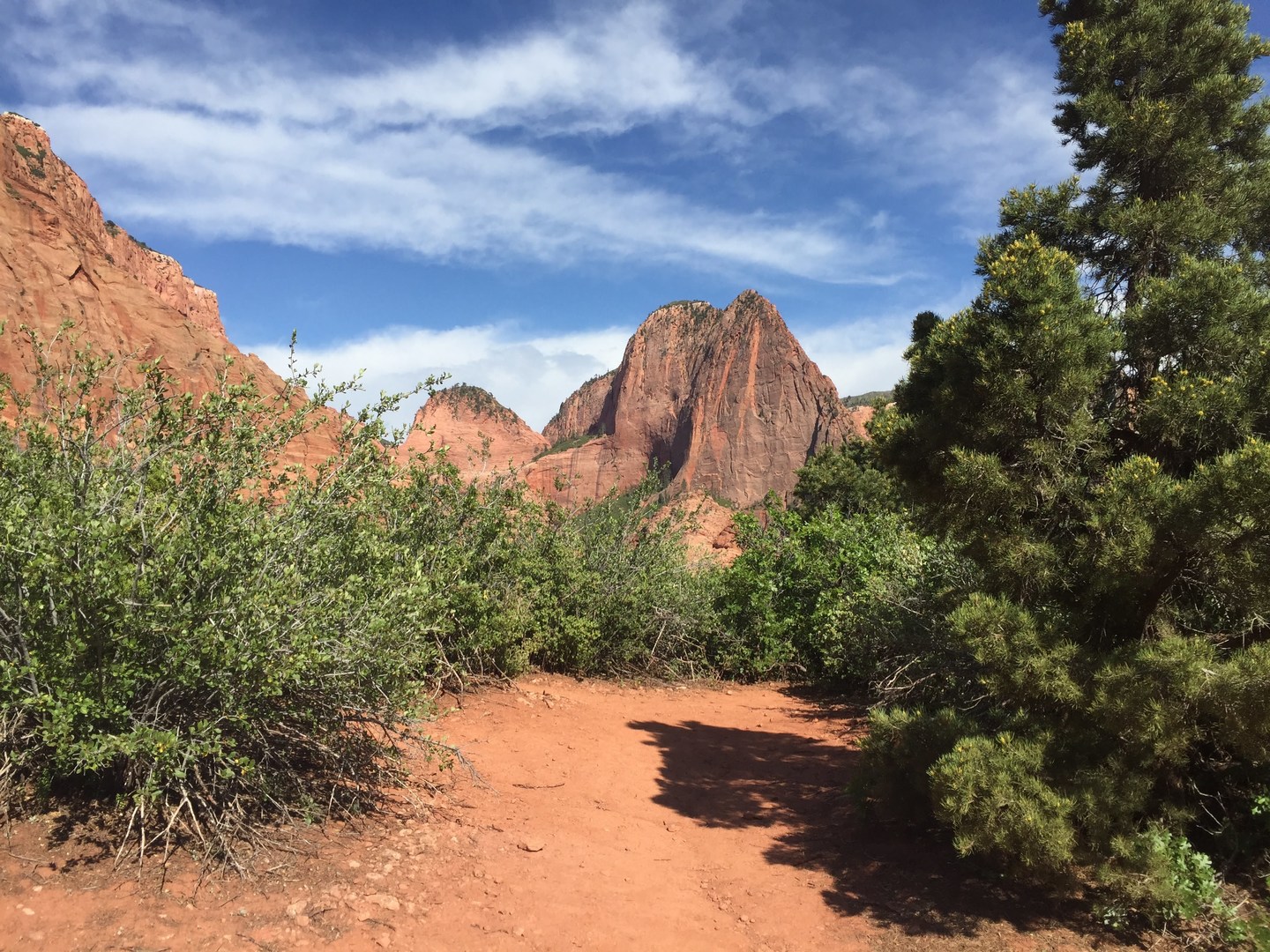You are here
The Zion Traverse is a 47.6-mile point-to-point route crossing east to west through Zion National Park. This route is an epic traverse that explores the backcountry as well as popular sights within the park. The route features well maintained singletrack trails through an incredible landscape with steep walled canyons and unique geologic formations featuring various types of sedimentary rock. You'll encounter an abundance of wildlife within different ecosystems including desert, riparian, and pinyon-juniper woodland communities as you cross high plateaus, travel through lush valleys, and traverse narrow canyons.
This route is ideal for anyone seeking to explore Zion National Park to the fullest. Whether you are looking for a multi-day backpacking trip or a challenging ultra-run, this route has it all.
DIRECTIONS
Starting from the Lee Pass Trailhead, the route descends south on the La Verkin Creek Trail heading towards La Verkin Creek. At La Verkin Creek the trail heads east and begins a long, gradual ascent. At mile 6.50 turn right and head south and continue to climb along Hop Valley Trail. There is a right turn onto a Connector Trail near the Hop Valley Trailhead, this area can be tricky to navigate and having a map or track downloaded is advisable. The Connector Trail joins Wildcat Canyon Trail and continues to climb all the way to the West Rim Trailhead.
Follow the West Rim Trail south passing through the flat, dry, and shadless terrain around Horse Pasture Mesa. When you reach a trail junction at Cabin Spring, turn right and stay on the West Rim Trail following it all the way down into Zion Canyon and the North Fork of the Virgin River. Before reaching the river you have the option to add on a side trip (this may require an additional Angel's Landing permit) to Angel’s Landing, one of the top hikes in the park.
You’ll reach the Grotto Trailhead and briefly follow the road to the Weeping Rock / East Rim Trailhead. You have a final, steep and challenging climb along the East Rim Trail before a final descent to the East Rim Trailhead / East Entrance and the end of the traverse.
WATER
This route passes by creeks, streams, springs, and water spigots. For updated information regarding water availability and specific locations please visit https://www.nps.gov/zion/planyourvisit/watersources.htm.
WHEN TO VISIT
Spring (April-May) and fall (September-October) are ideal seasons to avoid extreme heat.
PERMITS
All overnight backpacking in Zion National Park requires a permit. Plan and prepare ahead of time by reading through the NPS- Backpacking Reservation Guide.
CONSIDERATIONS
-
Be prepared for quickly changing weather in the park.
-
Make sure to bring maps and identify various exit points.
-
July - September is monsoon season which means an increased risk for flash floods.
-
In the summer, temperatures can exceed 100 degrees in the lower elevations.
-
Some sections of sandy trail.
SHUTTLE
Arranging a shuttle is one of the more challenging logistical concerns of this route since the start and finish are nearly 60 road miles apart. Ideally, you would have someone to drop you off at one end and pick you up or leave a car at the other end. Another option is to find another person or group that is interested in doing the route in the opposite direction and arrange for a car swap and meet up at the end.
ADDITIONAL INFORMATION
Logistics + Planning
Current Weather: Powered by Dark Sky
























Comments
Sign In and share them.